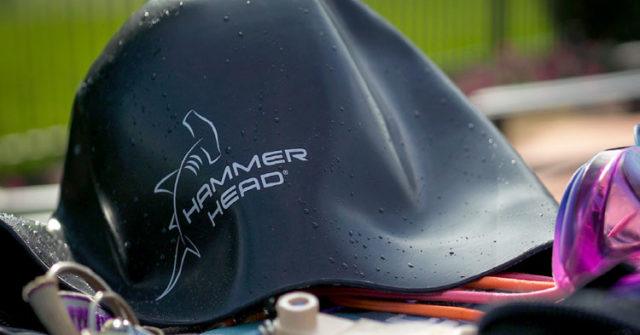A Q&A WITTH MARSHALL LOVE ON LOVE SWIMMING, IMPORTANCE OF SWIM SAFETY
Courtesy: SwimSwam, a Hammer Head partner.

Q: How long have you been involved in the sport of swimming, Marshall?
For as long as I can remember really. I grew up in a small town in Texas with a swimming pool in the backyard. I swam the mile race at summer camp when I was eight years old and did really well, so my dad suggested I join the local swim team. I guess I was a natural from an early age, and loved it. As a teenager, I wanted to make some money and began coaching during my summers. As I got older and more experienced I discovered I had a real affinity for being around kids, helping them grow in their sport, and I knew my career was path was set. I swam and coached all through high school and college, and had a great mentor (Bob Leland) who really instilled in me the importance of continuing education for coaches. Most people don’t know that quality coaches never stop learning and adding to their experience base.
Q: When did you decide to open Love Swimming, your own swim school and why?
I graduated college with a business degree and loved the idea of being an entrepreneur. I moved to New Orleans to coach with Nu Wave Swim Club, which I loved (and still do). In one of my business classes at Tulane a famous entrepreneur told me; you have to scale. I began thinking how can I take what I do in coaching and help even more kids, but maybe even earlier in their swim careers. The idea for Love Swimming was born. My business partner Kaye Doiron and I started in 2002. We were the first to use an above ground pool and things grew quickly. Today we have between 300-700 beginners and young swimmers per week.
Q: You’re famous for practicing safety first with your staff, families and swimmers. Can you talk about why safety is so important to you?
Kids love Love Swimming because we’re fun and we make learning to swim fun. Parents bring their children to us because we’re focused on a safe learning environment and promoting safe practices in the sport at the earliest level. As they progress through our programming, they learn how to move from safety skills to floating, then propulsive movements to stroke mechanics and side breathing—all with safety as the primary goal. We do this so if they ever get into a chaotic situation in water, they are prepared with the best skills to cope. We want our athletes to be the best swimmers at the pool, the party, the beach and in the swim club lanes. We run classes for phobic adults and for under privileged communities who may not have easy access to water or swim tuition.
Q: As a coach how important is learning to swim properly at an early age?
It’s SO important. The earlier a family can get their kids comfortable with the water, the better. Swimming is arguably the most important life skill under the age of five. We run a program called Stroke School where our aim is to get these beginners technically proficient and fully prepared to join swim teams and clubs, which are becoming incredibly popular with kids as young as five. Parents love the community feel of swim teams for their kids but we want to make sure every young swimmer who comes to us is ready to swim safe whether they go on to a club or just hang out at the pool with other kids.
Kids are unpredictable and full of energy on the pool deck and in the water. Even with the best supervision in the world, there’s a chance someone’s going to hurt themselves, colliding in the water or slipping on the pool deck. Whatever we can do to keep them safe is our number one responsibility as parents, instructors, and coaches.
Q: Safety – and particularly head safety for swimmers – is becoming a real focus for the swim industry. How do coaches feel about that?
I used to race bikes years ago and nobody ever wore a helmet. Now that’s unthinkable. Helmets are now a billion dollar industry in cycling and as a parent you’re practically arrested if you let your child even get on a bike without a helmet. There’s been a societal and worldwide surge of awareness of head injuries in many sports, like football, hockey, soccer, you name it. Swimming has been slower to catch on, but it’s happening finally. Coaches, athletes officials and parents are now coming to fully realize, swimming may not be a combat sport, but is a contact sport. Did you know that 70 percent of head strikes happen in busy club practices and close to 30 percent during swim meet warm ups when you can have upwards of 250 swimmers across eight lanes of swimmers? The governing bodies are looking at the issue as we speak, but in the meantime, everyone on the pool deck is focused on the issue and looking for solutions.
Q: Is that why you’re a fan of the new protective swim cap, the Hammer Head® Swim Cap?
Absolutely. I met David Burns, one of the co-founders at a swim conference recently.
I’ve shown the Hammer Head cap to instructors at our school and others in the industry. Some are saying it’s clever, but not necessary. Then the more they think about it, the more they realize kids are getting injured, and why shouldn’t we protect them like we do in other sports. Right after that conference, I saw the worst ever collision between two kids I’ve ever witnessed. One young girl was doing a backflip and hit another girl who weighed only about 50 pounds. It was ugly and really brought everything home to me. I saw the value of a cap like Hammer Head in living color. And it’s such a simple, but effective idea: every Hammer Head contains a patented layer of honeycomb material that helps to absorb and dissipate the shock of accidental and recurring impacts. Genius.
Q: What else can keep swimmers safe in the water?
As coaches we spend a lot of time trying to keep kids, especially younger ones, organized in the water. How do you get these little people heading in the right direction, circle swimming and staying out of danger in lanes that are not always wide enough? It can be like herding cats. It’s not intuitive so we remind every swimmer to look at the bottom of the pool when they swim. If a coach can’t keep kids from running into each other, he or she is never going to be able to teach legal breaststroke. We’re also encouraging awareness in the water: be aware of others around you and what’s going on. It sounds simple, but it needs to be practiced every day, every swim.
Q: Are you seeing swimmers wearing Hammer Head caps now?
Yes, it’s spreading quickly. Grown up swimmers like masters and triathletes get the safety and comfort value behind the Hammer Head right away. Parents recognize the protective properties quickly for their young beginners and age group swimmers on teams. I’ve seen kids on the pool deck, testing its protective layer properties by knocking on it with their hands. They get it. Why wouldn’t they?
About Marshall Love
Marshall Love, a lifelong swim enthusiast, has worked as a professional swimming coach for 28 years in both domestic and international settings. He is the co-founder and owner of Love Swimming, Louisiana’s largest swimming academy (est. 2002). He has coached every level of swim from infant—Olympic qualifier.
About Hammer Head® Swim Caps (www.hammerheadswimcaps.com)
Hammer Head® Swim Caps is a patented and trademarked product of Mako International LLC, co-founded by David Burns, a 20-year swim coach and swim school owner, and Theresa Finn, a sports brand marketing and business development executive with a manufacturing background. The Hammer Head Swim Cap is the world’s only protective swim cap and has been endorsed by Rowdy Gaines and ASCA (American Swimming Coaches Association). It incorporates patented HIT Honeycomb Impact Technology® designed to reduce injuries from accidental and repetitive head strikes with other swimmers or the pool wall. In addition TEKFIT® wrinkle-free surface gives racers a cap that is both comfortable and fast. It also gives parents a cap with greater value, built with strength and durability. Practice in it. Compete in it. Win in it.


